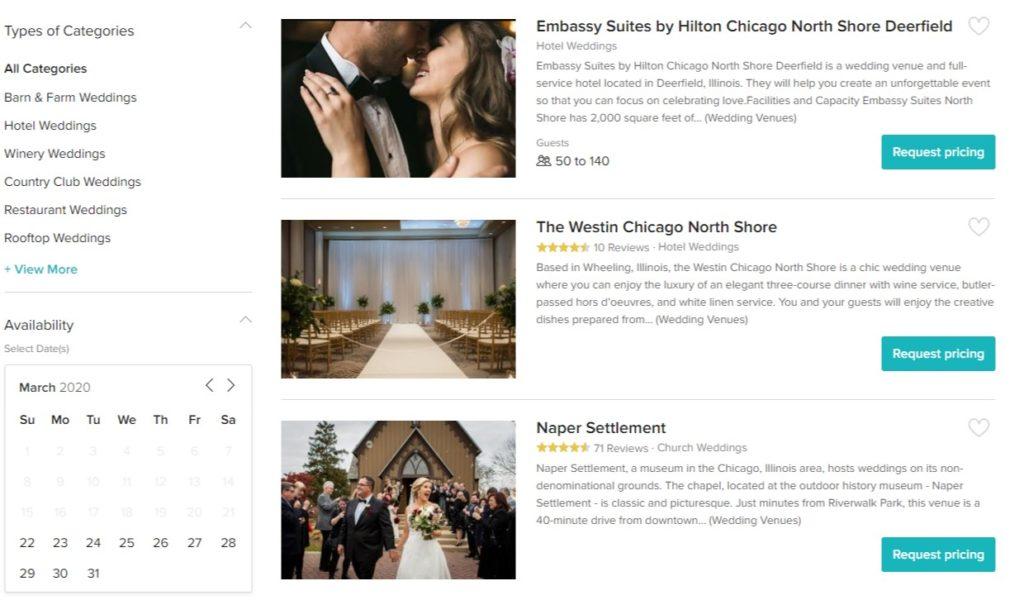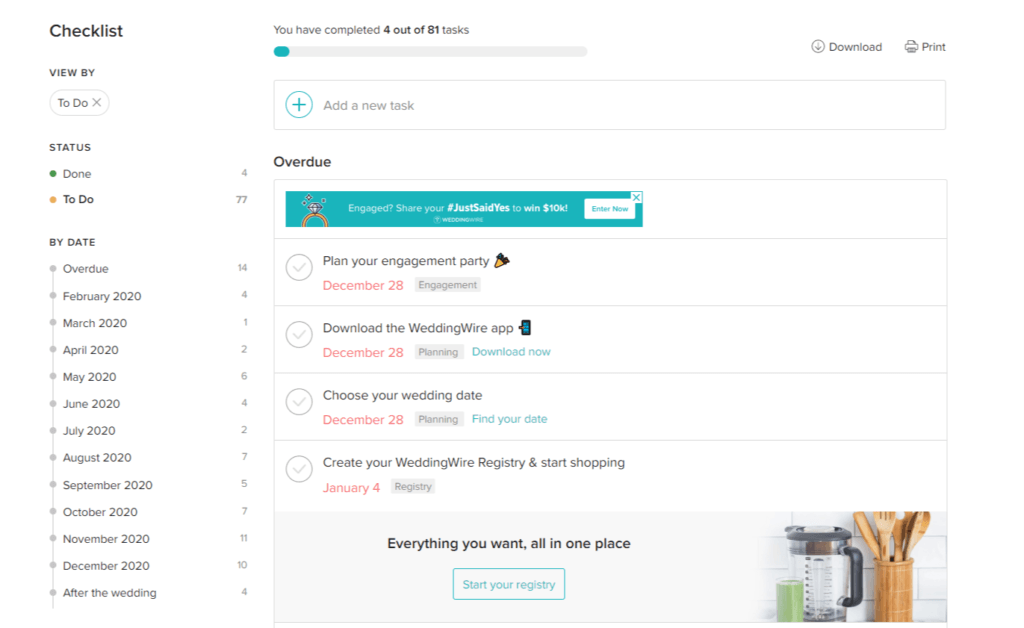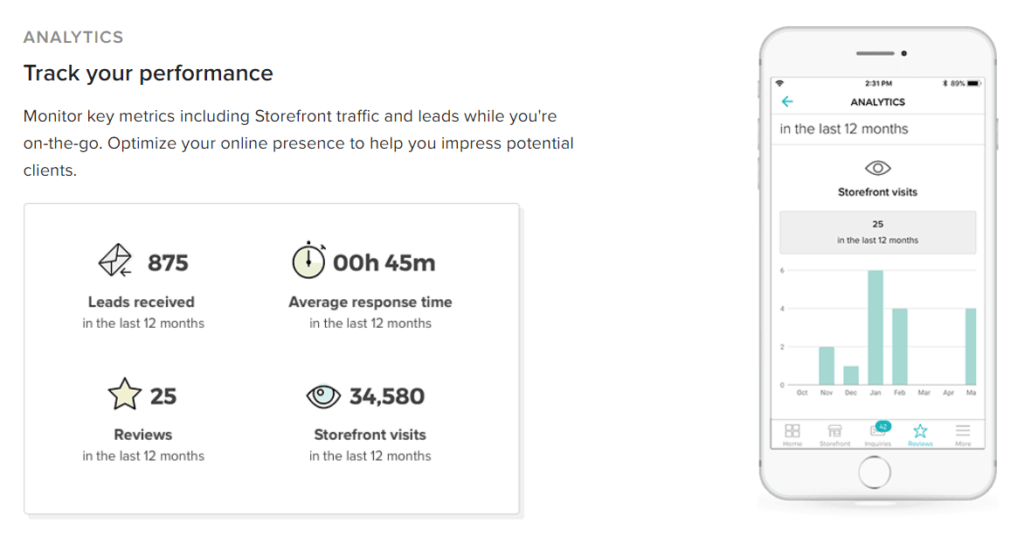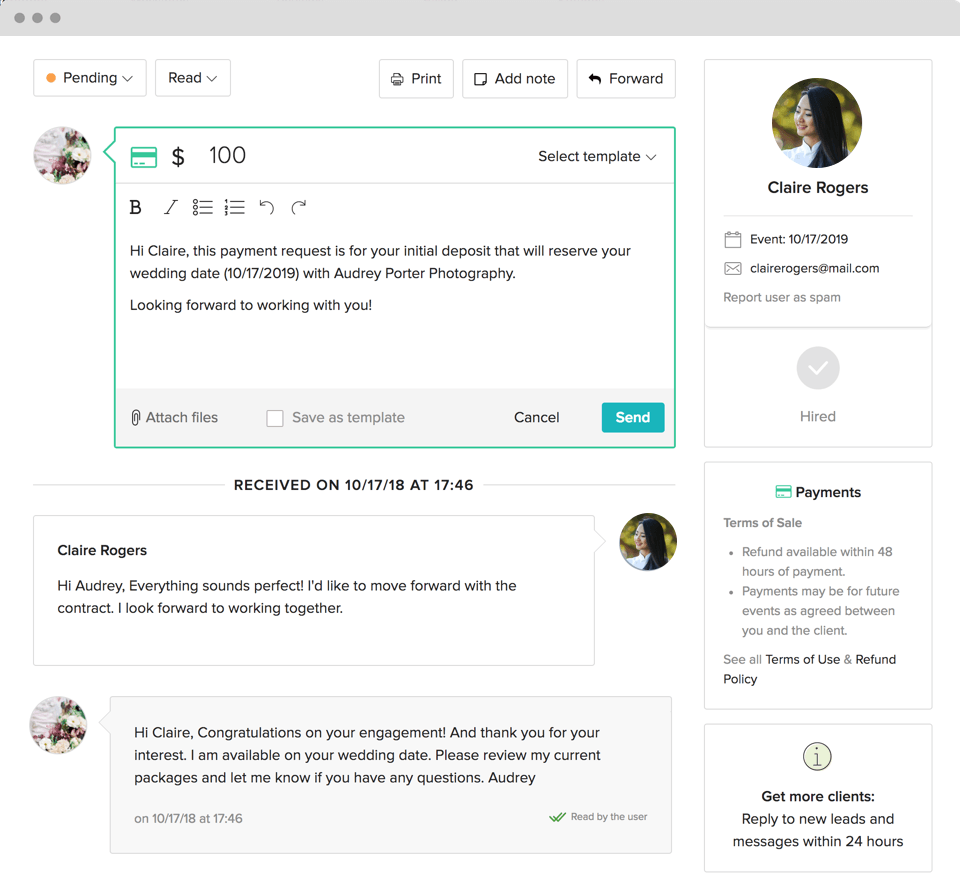WeddingWire: with you till you say I do!

 WeddingWire is a platform that connects engaged couples with wedding vendors to help them plan their wedding and streamline the process as much as possible. It was founded in 2007 by Timothy Chi who was frustrated by the complexity and opaqueness of the industry as he was planning his own wedding. Today, WeddingWire has managed to help millions of couples around the world and has added over 500,000 vendors to its online directory. It recently merged with another wedding marketplace “The Knot” in a transaction worth $933M making it the largest wedding marketplace in the world. So, what makes WeddingWire so successful? How does it create and capture value? Finally, how sustainable is its competitive advantage?
WeddingWire is a platform that connects engaged couples with wedding vendors to help them plan their wedding and streamline the process as much as possible. It was founded in 2007 by Timothy Chi who was frustrated by the complexity and opaqueness of the industry as he was planning his own wedding. Today, WeddingWire has managed to help millions of couples around the world and has added over 500,000 vendors to its online directory. It recently merged with another wedding marketplace “The Knot” in a transaction worth $933M making it the largest wedding marketplace in the world. So, what makes WeddingWire so successful? How does it create and capture value? Finally, how sustainable is its competitive advantage?
Creating and capturing value in a fragmented industry
There are basically two sides of this platform: the end customer planning their wedding and the vendors supplying services for the wedding (caterers, florists, venues, photographers etc.).
The end customers use the platform as a planning tool as they get access to an online directory of vendors with real customer reviews, a “checklist” to track progress and to dos, budget tool, guest list tool, wedding inspirations, and a discussion forum to connect with other couples. As for the vendors, they use the platform to create their own “online storefront” on the marketplace, generate more leads, receive payments, gather customer data analytics (e.g. customer interests, storefront visits, leads generated), manage clients (basic CRM functions), and network with other vendors.




The platform solves several pain points in the wedding industry creating value for both end customers and vendors.
From the consumers’ side, it gives them access to vendors rated by thousands of users creating more transparency around the quality of service as well as the pricing which has always been opaque. This also gives couples many options for vendors to choose from saving them time and effort otherwise spent navigating the fragmented vendor industry and relying on word of mouth only. Moreover, the all in one free planning tool helps customers streamline a lot of the “required but not desired” tasks of wedding prep such as compiling the guest list eliminating a lot of the stress associated with wedding planning.
As for vendors, the platform targets small businesses and lets them create their own online “storefront” to showcase their services including pictures of their wedding portfolio and average pricing. This allows small mom and pop vendors to be found by customers who can now search and reach out to vendors directly. Another major pain point WeddingWire solves for vendors is the provision of customer analytics and basic CRM functions which small businesses do not have access to currently.
To capture some of the value created, WeddingWire charges the vendors for the business it creates for them via its marketplace. It charges a subscription fee for running an online storefront and advertising on the marketplace. The higher the subscription tier the more exclusive the service is i.e. vendors would receive priority listing over others and are guaranteed first-page placement. Every vendor gets a customized quote based on its business category and size.
WeddingWire, a happily ever after story?
WeddingWire has been very successful so far and was able to grow rapidly. Its strong competitive advantage could be attributed to three main pillars:
- First-mover advantage: one of the early entrants of the market allowing it to build a reputation in the industry and attract vendors who have little incentives to “multi-home” as they were already paying to be featured in a marketplace are getting sufficient traction from customers
- Understanding of customer needs: platform solves clear pain points and offers a customized experience no other competitor offered at the time
- Strong direct and indirect network effects: the more couples use WeddingWire, the more vendors would be interested to join and vice versa. We can also see same-side network effects as happy couples tell their friends about the platform and more vendors get their business partners on board (e.g. venue refers caterer to platform because they are used to working together). This makes its competitive advantage sustainable
The company’s differentiated business model and large scale makes it a strong leader in the market. However, it needs to account for many risks as it prepares to scale. For starters, its customers are all one-time customers since people plan their wedding once (ideally :). Hence, it should aim to decrease its customer acquisition cost. Moreover, the company might need to charge a commission on transactions to remain profitable which exposes it to disintermediation risk as the two sides of the platform get matched online but take their business offline.
It seems that WeddingWire’s story is a happily ever after one after all.




I agree with your concerns about the sustainability of the company. Particularly related to disintermediation because they are currently only capturing value from the vendor side of the marketplace. They will likely need to continue to add services or update their pricing model to incentivize both parties to transact on the platform. Additionally, because the platform is a local marketplace rather than a global one, it would be easier for a competitor to enter and begin to take market share from Wedding Wire.
Thanks Petra! I’ve looked at wedding planning space before (for investment opportunities) and was amazed how fragmented and inefficient it was. You are totally right Wedding Wire create a lot of value by aggregating both demand (couples) and supply (vendors) side. I wonder whether there is still room for innovation & disruption as many of the pain points that I have heard from customers is the overwhelming optionality – a dozen options to choose from for bouquet, catering, registry… the list goes on and on. Wedding planners could potentially be an additional value-added service that help couple make those infinite choices. And in terms of increase customer value as they usually just shop once – one trend I’ve seen is vertical integration, for example: Zola wedding registry started to offer couple honeymoon package based on high demand.
Thanks for the interesting article! I think a transaction-based commission to the vendor sounds “fair” for customers. The current subscription model incentivizes vendors to spend more money on advertising which eventually will be passed over to customers by raising the price. Unsophisticated customers might only look at the top list and pay more without noticing it. I don’t think disintermediation is a big issue here because, as you mentioned, the nature of one-time transaction of the business.
Thanks Petra – Great article!
I completely agree about the need to reduce customer acquisition costs. Maybe some sort of referral program could be helpful. For example, if a woman already got married but still referred her friend to use the platforms, they would both get some sort of discounts (e.g. for the woman that already got married, maybe a discount on frames or books for wedding pictures, or a discount on the fee for a designer to create a collage of the picture)
Another idea would be to incentivize the bride to add the bridesmaids/ friends on the platform and assign tasks to them (e.g. bachelorette party planning). Once these bridesmaids engage with the platform and notice how easy and user friendly it is, they would be more likely to use it for their own plans.
Another idea would be to add the wedding registry function on the website to raise awareness about the platform (i.e. guests would know about it).
I have tried The Knot and Wedding Wire and found Wedding Wire to be a superior offering personally. They seem to incentivize their vendors well to respond quickly and enable price transparency and price competition on quote collection in a way which helps to combat the “wedding tax” on services that would have been cheaper if it wasn’t for a wedding (cake, photographer, DJ, etc). It’s interesting how they try to encourage you to document which vendor you chose, and I wonder what they do with that info when it comes to charging vendors. Transactions with vendors are also outside of the platform, but can be voluntarily documented and shared by users but would be hard to charge a fraction of.
Great Petra! I’ve heard from many friends a lack of transparency when it comes to wedding pricing (ie charging significantly more than for any other social event). I wonder whether bringing this as a feature for engaged couples could help Wedding Wire in capitalizing in fees from the couples themselves.
Thanks for a great post on what seems to be a great business model!
However, in terms of the risks you mention, it is not clear to me what the size of the customer acquisition cost is, and if it is a major hinder for growth. And for disintermediation, I actually am not as worried. Although it is true that the two sides may communicate outside of the platform, e.g. with customers paying less as vendors don’t have to pay the charge to WeddingWire, the vendors have a huge incentive to keep customers through the platform as their reviews, reputation, and spread among users depends on business made on the website. Further, by disintermediating with certain customers they lose such data points into their customer analysis as well as valuable tools for managing the client. As for customers, vendors are motivated to perform best and in accordance with their promises if deals are made through the website, establishing trust and security, which I believe deters customers from going offline.
One worry however is WeddingWire’s model to give higher subscription tiers priority listing over others and guaranteed first-page placement. This could potentially put smaller mom and pop vendors that most need the platform at a strong disadvantage, where the larger vendors, or at least those with already more resources, win customers before they have a chance to “compete”. It is important WeddingWire makes sure all vendors are able to get an equal chance to win customers so that they find enough value being on the website.